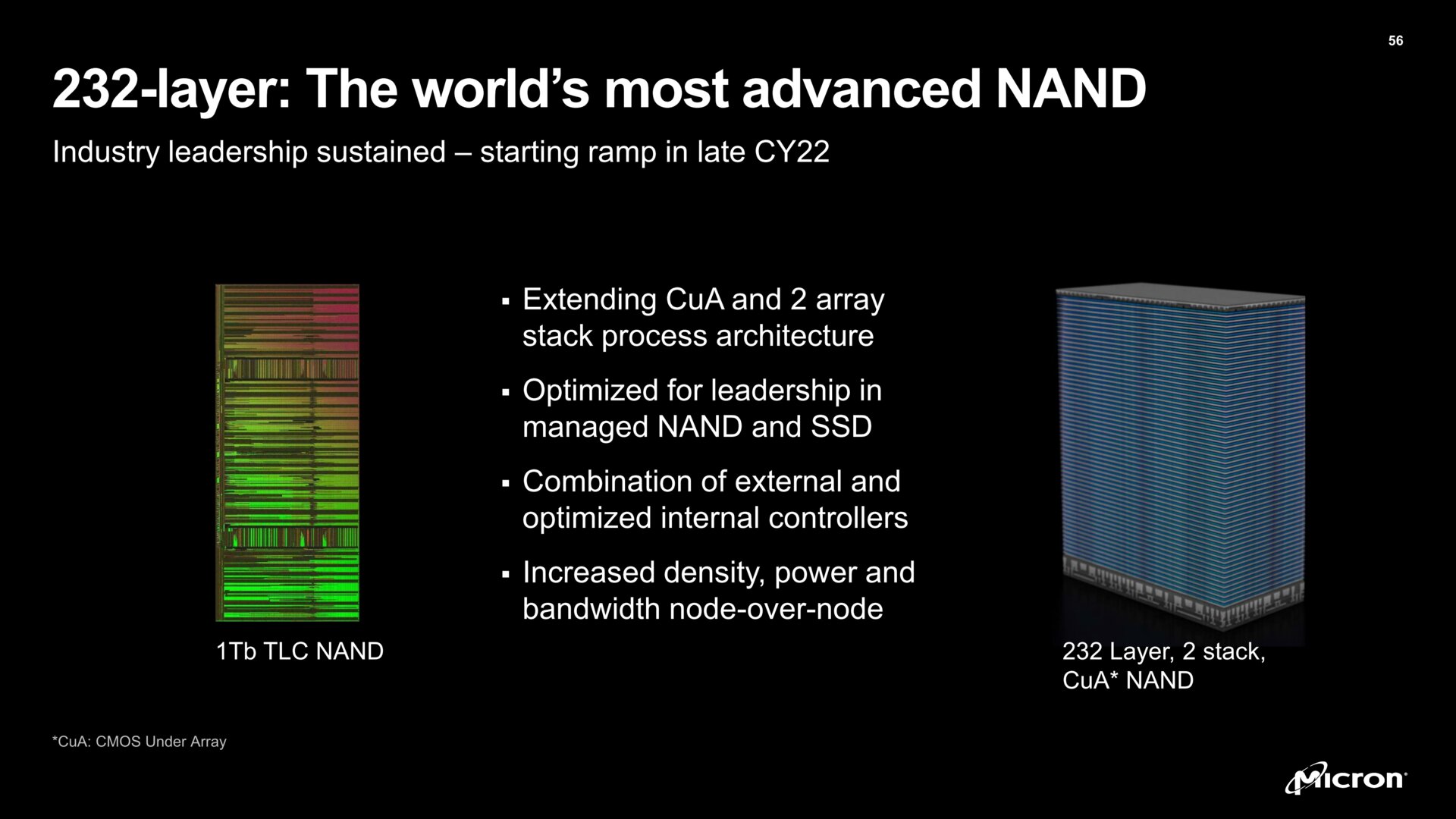Micron is ahead in the layer race: The memory manufacturer plans to start production of the new 232-layer 3D NAND by the end of the year, which has now been presented for the first time. The TLC version offers 1 terabit (128 GB) per die; twice that of its 176-layer predecessor and the same as current QLC NAND.
The number of layers, i.e. the levels of 3D NAND flash memory equipped with memory cells, alone does not say how high the areal density is or how good the NAND is in terms of cost, performance or durability. So much should be said in advance.
Micron stacks high
However, Micron is currently at the forefront of layer stacking and back in November 2020 presented the industry's first 176-layer NAND based on Micron's proprietary replacement gate architecture. Micron advertised at the time with a die that was 30 percent smaller than that of the competition and promised a decent increase in performance. In fact, Micron's 176-layer TLC-NAND was able to speed up the already fast SSDs with a Phison E18 controller – the combination is rare on products like the Seagate 530 SSD (test) or Corsair MP600 Pro XT (test) in benchmarks to beat.
Micron is now using Investor Day to introduce the next generation. This has 232 layers and is scheduled to be manufactured by the end of 2022. However, high quantities are only expected for the coming year.
 Micron's new 232-layer NAND (Image: Micron)
Micron's new 232-layer NAND (Image: Micron) Micron is once again using two stacked layer towers (array or string stacking), one of which must consist of 116 layers. With 176-layer NAND, two 88-layer towers are used accordingly. It is not known whether Micron was able to reduce the thickness of the layers again. It has long been common practice for the logic circuits to be located on their own level under the memory layers (CMOS under Array, CuA) in order to save space.
Micron has not revealed how big or how high the 232-layer NAND is. However, a TLC chip with 3 bits per memory cell offers a high storage capacity of 1 Tbit or the equivalent of 128 GB. This had previously only been achieved with 4-bit-per-cell QLC NAND, which is slower and less durable.
 Micron's 176-layer NAND (Image: Micron)
Micron's 176-layer NAND (Image: Micron) It remains to be seen whether, as with the 176-layer generation, Micron will later follow with a QLC variant of the 232-layer NAND, which either offers even more storage space per die or is significantly smaller. In any case, the storage density would increase again. For the time being, however, Micron does not give specific figures for the TLC version. And so it remains unclear how high the mentioned improvements in density, energy consumption and throughput will ultimately be.
SSDs with their own and external controllers
The first SSDs with 232-layer NAND are expected in the coming year. Micron will again enable its own solutions with its own controllers and solutions from partners with controllers from other manufacturers. In the consumer area, Micron offers SSDs under the brand subsidiary Crucial. The most recent example is the Crucial P5 Plus (test) with a Micron controller and Micron 176L TLC NAND. With this, the manufacturer managed to catch up with the top SSD again. However, as mentioned above, the solutions with the Phison E18 controller and the same NAND are even faster.
Micron's ambitious roadmap for the next decade is only for later Generations with more than 300 or 400 layers again introduce major changes in architecture and design. According to this, the previous architecture is easily scalable for even more cell layers.
 Rough NAND roadmap from Micron (Image: Micron)
Rough NAND roadmap from Micron (Image: Micron)